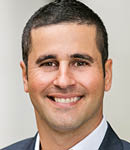Since the beginning of 2016, our conversations with capital sources have made it abundantly clear that concerns over a tighter global financial outlook and the implementation of new regulations have caused a shift in lender sentiment. This comes at a time when the strong demand for new construction loans is consistent with 12 months ago, but the supply of capital is constrained as lenders react to allocation issues, as well as the Basel III regulations.
As banks become increasingly concerned with their exposure to risk in commercial real estate loans, specifically construction loans, they are tightening their underwriting standards and, in certain cases, reserving capacity for existing borrowers.
Here are a few tips you need to know to attract the shrinking pool of construction loan dollars:
Banking relationships matter
As the high volatility commercial real estate (HVCRE) rules take shape and developers continue to reach out to banks for their construction needs, relationships are becoming increasingly important as construction loan dollars are constrained. Banks, for the most part, are now restricted and preserving any remaining construction capacity for existing client relationships or requiring a good reason to entertain new prospects.
In addition, the request for a strong deposit relationship has returned to the scene. As always, we feel it is part of our role to provide our clients with options and multiple good banking relationships to avoid the “meet and greet” phase when they’re pressed for time.
Click here for additional information on HVCRE and exceptions for qualifying loans.
Answer questions before lenders ask
Banks that do have remaining capacity for construction loans are now receiving such an influx of new requests that the length of the review process has drastically increased. This has also caused banks to become more selective, even on “cleaner” deals.
While the length of the review process remains a constant variable, we are able to cut through the noise by targeting specific lenders that we know, through our experience, have closed similar deals and currently have the ability and proper lending programs to meet that specific request. In a constrained market, it’s important to show potential lenders that you’ve already addressed any concerns in your request in order to combat future issues.
And just as we maintain good banking relationships for our clients, we also understand the unique nuances of development and construction financing. As such, we can best position their project in a concise, complete financing package that respects lenders’ limited time, which assists in receiving a quick “yes” or “no” that is so critical to each project’s success.
So as the supply of construction loans dollars decreases, we find that matching the right project to the right lender, leveraging relationships and recognizing the impact new regulations have on lending practices, will make all the difference in approval of our client’s next construction loan.
Recognize the role CMBS plays
As discussed in our previous capital markets insights article, we predicted CMBS loan volume to decrease in 2016 largely due to the widening of spreads; Dodd-Frank, which requires 5 percent retained by loan originator for five years; and Regulation AB. Regulation AB, which will also go into effect in January 2017, will hold senior executives personally liable for loan performance and make them certify they are unaware of any undisclosed negative aspects. For this reason, we may see banks directly originate CMBS loans to hold the 5 percent requirement and to avoid loan kick outs. We may see banks tighten warehouse lines to mitigate risk as CMBS originators are working to discern the full impact of the new regulations.
 Shlomi Ronen is a managing principal and founder of Dekel Capital. In addition to leading Dekel Capital and Dekel Strategic Investors, Ronen is an adjunct professor at the University of Southern California, teaching a graduate level course on Real Estate Capital Markets in the Master’s of Real Estate Program.
Shlomi Ronen is a managing principal and founder of Dekel Capital. In addition to leading Dekel Capital and Dekel Strategic Investors, Ronen is an adjunct professor at the University of Southern California, teaching a graduate level course on Real Estate Capital Markets in the Master’s of Real Estate Program.

